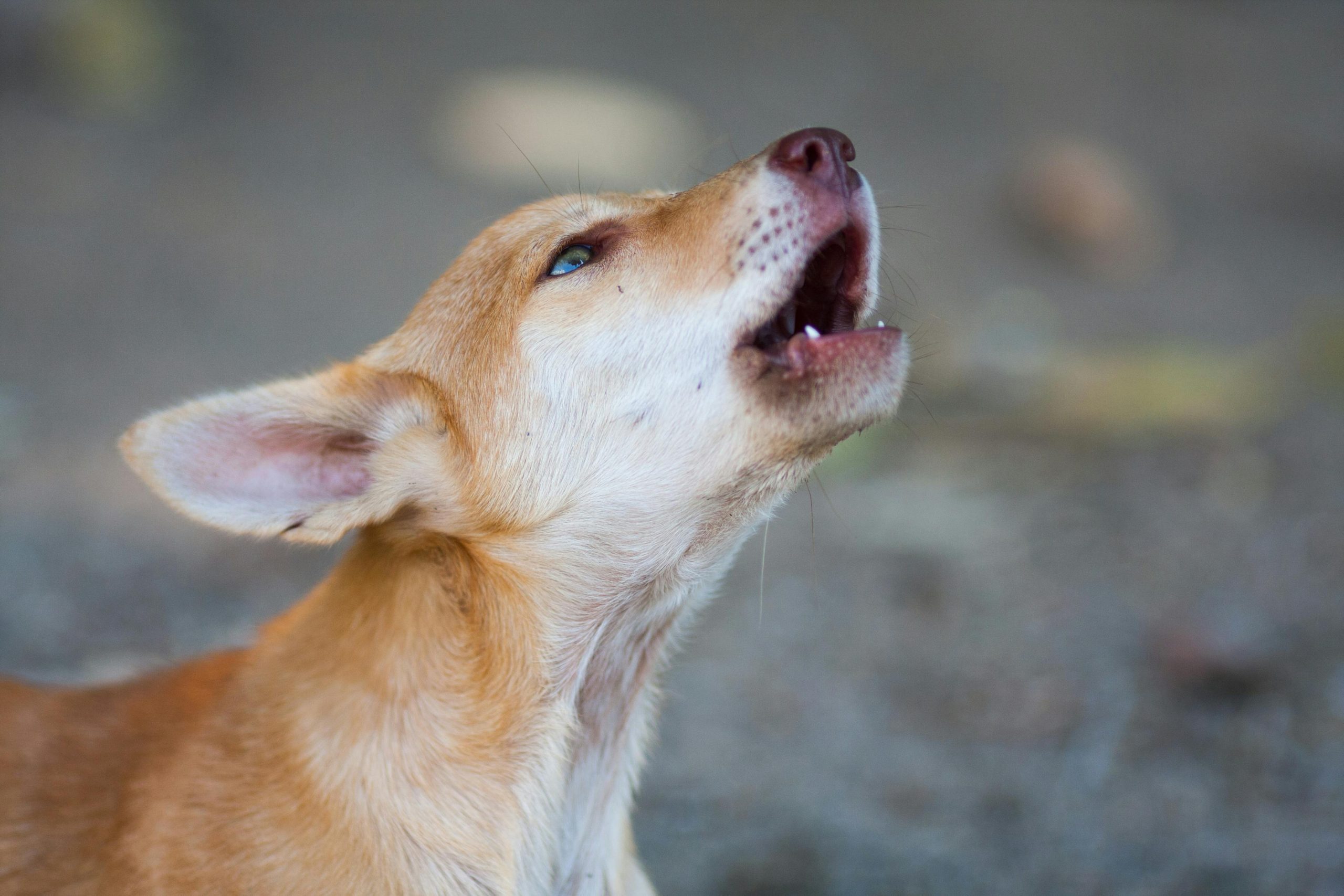
Have you ever wondered, “Why do dogs howl at certain sounds?” This curious behavior is not just a random act but a complex form of communication with deep evolutionary roots. As descendants of wolves, dogs have inherited many of their ancestors’ behaviors, including howling. Understanding why dogs howl at specific sounds can help us better connect with our canine companions and address any issues related to this behavior. Whether it’s the wail of a siren, the notes of a musical instrument, or the sound of another dog howling, certain sounds can trigger a howling response in dogs. In this article, we will explore the reasons behind this behavior, its evolutionary background, the specific sounds that provoke howling, and how we can manage and reduce unwanted howling.
The Evolutionary Background of Howling in Dogs
Howling is a natural behavior that dogs have inherited from their wolf ancestors. Wolves use howling as a primary means of communication, signaling their location, calling pack members, and warding off intruders. This form of long-distance communication is crucial for survival in the wild, where pack cohesion is essential.
As dogs evolved from wolves, they retained many instinctual behaviors, including howling. However, the context and triggers for howling have changed as dogs adapted to living alongside humans. While wolves howl primarily for survival-related reasons, domestic dogs may howl in response to various stimuli that mimic the sounds of the wild or fulfill a similar communicative function.
Find Out Why Dogs Howl From A Professional Vet
Common Sounds That Trigger Howling in Dogs
Certain sounds are more likely to trigger howling in dogs. Here are some of the most common ones:
Sirens: The high-pitched sirens wail resembles the howls of other dogs or wolves, prompting a natural response.
Musical Instruments: Instruments like flutes, clarinets, and harmonicas produce tones that can elicit howling, possibly because they mimic natural sounds dogs are attuned to.
Other Dogs Howling: Hearing another dog howl can set off a chain reaction as dogs respond to the calls of their peers.
High-Pitched Noises: Any high-frequency sound, such as alarms or certain electronic noises, can trigger howling.
These sounds provoke howling because they resemble the sounds dogs would naturally respond to in the wild or stand out as unusual noises in their environment, prompting a vocal response.
The Communication Aspect of Howling
Howling serves as a vital form of communication for dogs. Here are some ways dogs use howling to communicate:
Locating Pack Members: Like their wolf ancestors, dogs may howl to signal their location to other dogs or call them.
Announcing Presence: Dogs howl to announce their presence to others, particularly in response to loud or unfamiliar noises.
Expressing Emotions: Dogs may howl to express emotions such as loneliness, anxiety, or excitement. For instance, a dog left alone for long periods may howl out of loneliness or separation anxiety.
Examples of howling as communication include dogs howling along with music, which can be a form of social bonding, or dogs howling in response to sirens, which may be an instinctual attempt to communicate with sound.
Behavioral and Emotional Reasons for Howling at Certain Sounds
Howling can also be a response to various behavioral and emotional triggers:
Anxiety: Anxious or stressed dogs may howl to self-soothe or seek attention.
Excitement: Excited dogs may howl to express their high energy and arousal.
Attention-Seeking: Some dogs learn that howling can get them attention from their owners, reinforcing the behavior.
The role of conditioning and learned behavior in howling is significant. If a dog receives attention or some reward every time it howls at a certain sound, it will likely continue the behavior.
Discover Breeds That Howl To Your Favorite Songs
Managing and Reducing Unwanted Howling in Dogs
If your dog’s howling becomes excessive or problematic, there are several strategies to manage and reduce it:
Desensitization: Gradually exposing your dog to the sounds that trigger its howling can help it become accustomed to these noises and reduce its reaction over time.
Positive Reinforcement: Rewarding your dog for calm behavior and using commands like “quiet” can help control howling.
Providing Comfort: Ensuring your dog feels secure and reduces anxiety can decrease howling. This might include giving them a comfortable space, toys, or even calming products.
Learn About The Breeds With Musical Howls
Conclusion: Why Dogs Howl at Certain Sounds and How to Manage It
In conclusion, understanding why dogs howl at certain sounds is key to addressing and managing this behavior. By recognizing the evolutionary background, the specific triggers, and the emotional and communicative aspects of howling, we can better appreciate and respond to our dogs’ needs. Embracing your dog’s howling as a natural part of their behavior and addressing any underlying issues will help foster a harmonious relationship between you and your furry friend.






